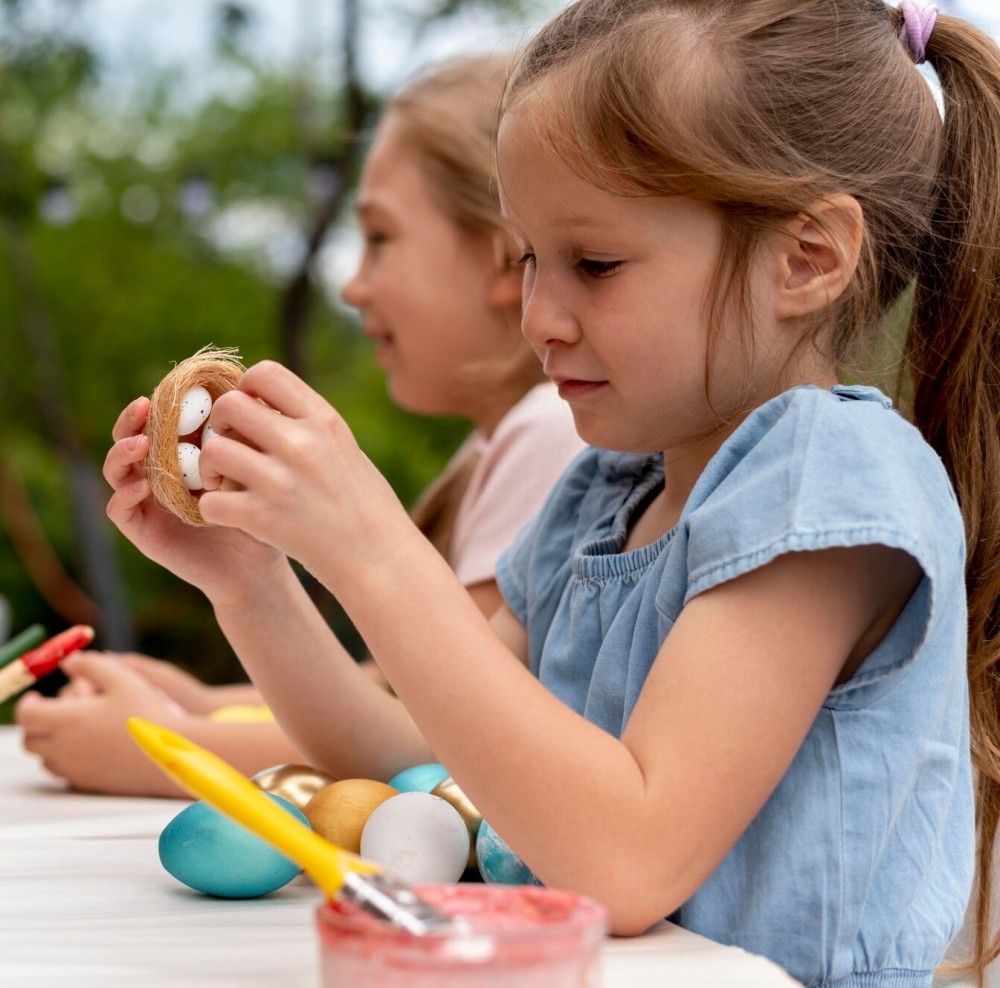Making the Most of Easter: Fun and Engaging Learning Activities for Kids

The Easter break is just around the corner, and while children may be excited for a break from school, it’s important for parents and tutors to keep them engaged in learning during the holiday. Instead of completely switching off from academics, there are fun and creative ways to turn holiday time into an educational adventure. In this article, we’ll share ideas for educational activities and projects that can make the Easter holidays both enjoyable and productive.
Why Holiday Learning is Important
Many parents worry about their children losing momentum over long breaks, especially after such a challenging period of learning due to the pandemic. This “holiday learning loss” is real: research suggests that children can forget up to a month’s worth of learning during extended breaks. But the good news is, there are plenty of ways to engage children in learning without it feeling like schoolwork.
In fact, the Easter holidays offer a unique opportunity to take a step back from the routine of school and focus on creative, hands-on learning activities that make learning feel exciting again. Whether it’s science-themed egg hunts, story-writing challenges, or exploring new hobbies, there are countless ways to keep children’s minds sharp over the break.
Fun Ways to Learn During the Easter Break
Here are some engaging holiday learning activities for students of all ages:
1. Science-themed Easter Egg Hunt
Why not turn your traditional Easter egg hunt into a learning experience? Create clues related to science, nature, or history and hide them inside colourful eggs. For example, kids can search for clues about the lifecycle of plants, facts about famous scientists, or historical figures. This adds an educational twist to a classic holiday tradition!
2. Spring Reading Challenge
Reading challenges are a great way to keep children engaged with books during the holidays. Set a target for the number of books they should read, and encourage them to pick books that align with their interests. If they enjoy fiction, opt for books related to the seasons, adventure, or mystery. Non-fiction books about space, animals, or the environment are great for curious minds. After finishing each book, have a discussion about the plot, the characters, or key facts learned to reinforce comprehension skills.
3. Creative Writing and Storytelling
Encourage children to write their own Easter-themed stories. They can invent a new Easter bunny adventure or a magical egg hunt in a faraway land. This allows them to practice writing skills while also boosting their imagination. You can extend this activity by asking them to illustrate their stories or perform them as short plays.
4. Nature Walk and Nature Journals
The Easter holidays coincide with spring, which is a perfect time to explore the outdoors. Take a nature walk in your local area and observe the changes that come with the season. Students can keep a nature journal, documenting plants, animals, and weather patterns they encounter. This activity encourages observational skills and teaches about biodiversity and the environment. It’s also a fun way to introduce young learners to science topics like ecosystems and conservation.
5. DIY Art and Craft Projects
Arts and crafts are not only fun but educational too! Use the Easter holidays to work on DIY projects that explore different techniques, such as painting, sculpting, and creating Easter-themed decorations. This helps students develop fine motor skills and boosts creativity. Plus, it’s a great opportunity to talk about the artistic styles of famous painters or historical art movements.
Setting Up a Productive Holiday Learning Routine
While keeping things fun, it’s important to set up a balanced routine to ensure children get the most out of their holiday learning time. Set aside 30 minutes to an hour each day for focused activities. This could involve reading, hands-on science projects, or educational games. The rest of the day can be spent on outdoor play, relaxation, or creative hobbies.
To make it feel more like a holiday than a school day, mix educational activities with fun breaks. You might want to incorporate outdoor play, cooking, or family games into the schedule. This balance will help children stay refreshed while still making progress with their learning.
How Tutors Can Support Learning During the Break
If you’re a tutor, the Easter break can be an excellent time to engage students with additional, non-traditional learning activities. Consider offering holiday workshops or one-on-one sessions that focus on specific skills the student wants to improve. You can also create themed activities like the ones above to keep the learning fun and interactive.
For example, a math tutor might offer a “math scavenger hunt” where students solve problems to find the next clue. Similarly, English tutors could set up a mini writing competition or a reading marathon to encourage students to finish their books before the holiday ends. Working in a more relaxed and creative setting can inspire students to enjoy learning and see it as more than just completing assignments.
Final Thoughts: Keeping Learning Fun and Engaging
The Easter holidays are a great opportunity to turn learning into a fun and creative experience. By using activities that spark curiosity and imagination, parents and tutors can help students continue their education without it feeling like a chore. Whether it’s through a science-based egg hunt, reading challenges, or a nature walk, there are many ways to keep children learning and engaged during the break.
Above all, the goal is to make learning an enjoyable experience. After the holidays, children will return to school refreshed and eager to tackle the challenges of the new term. So, let’s make this Easter a time to learn and grow—while having plenty of fun along the way!


